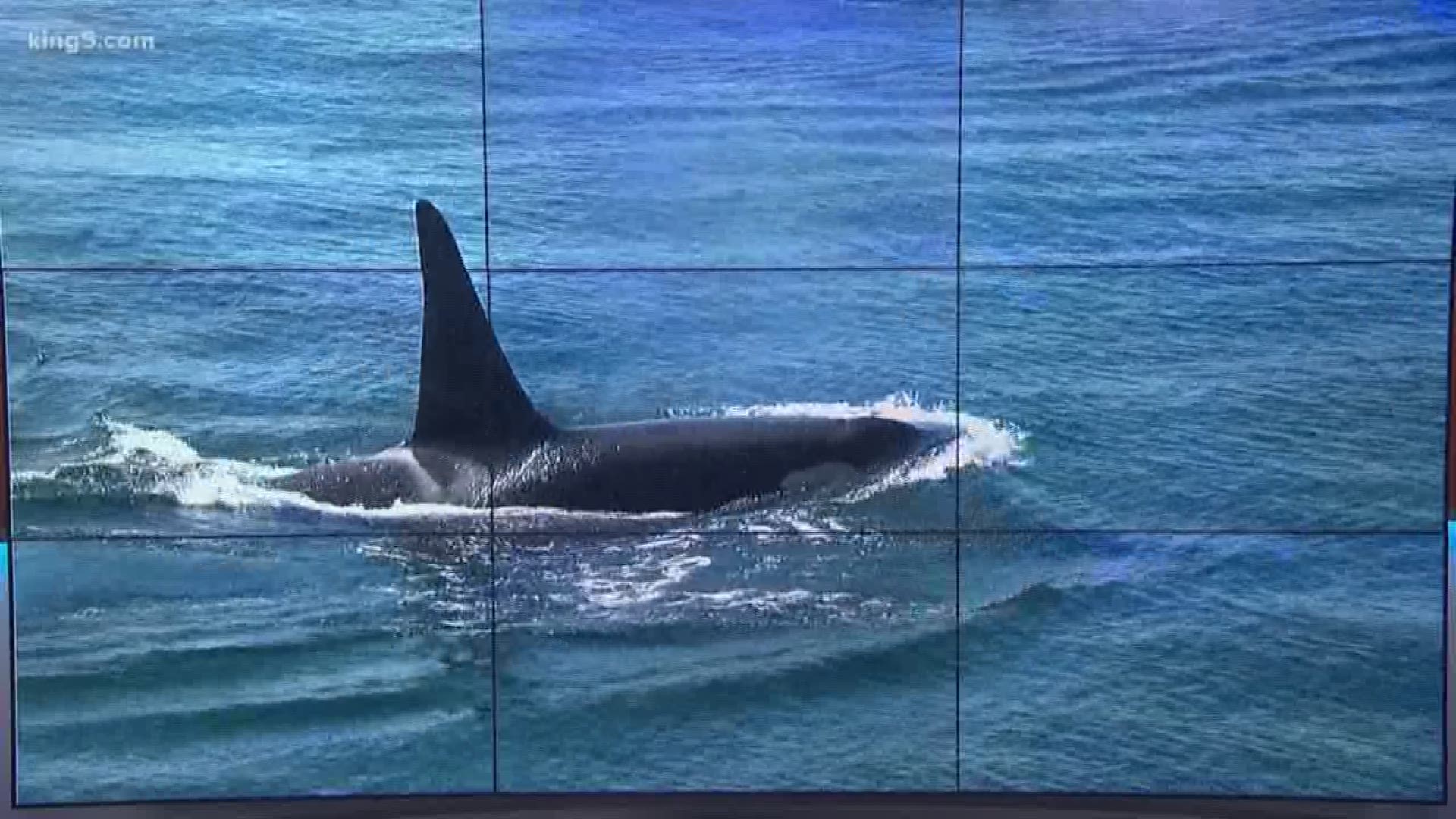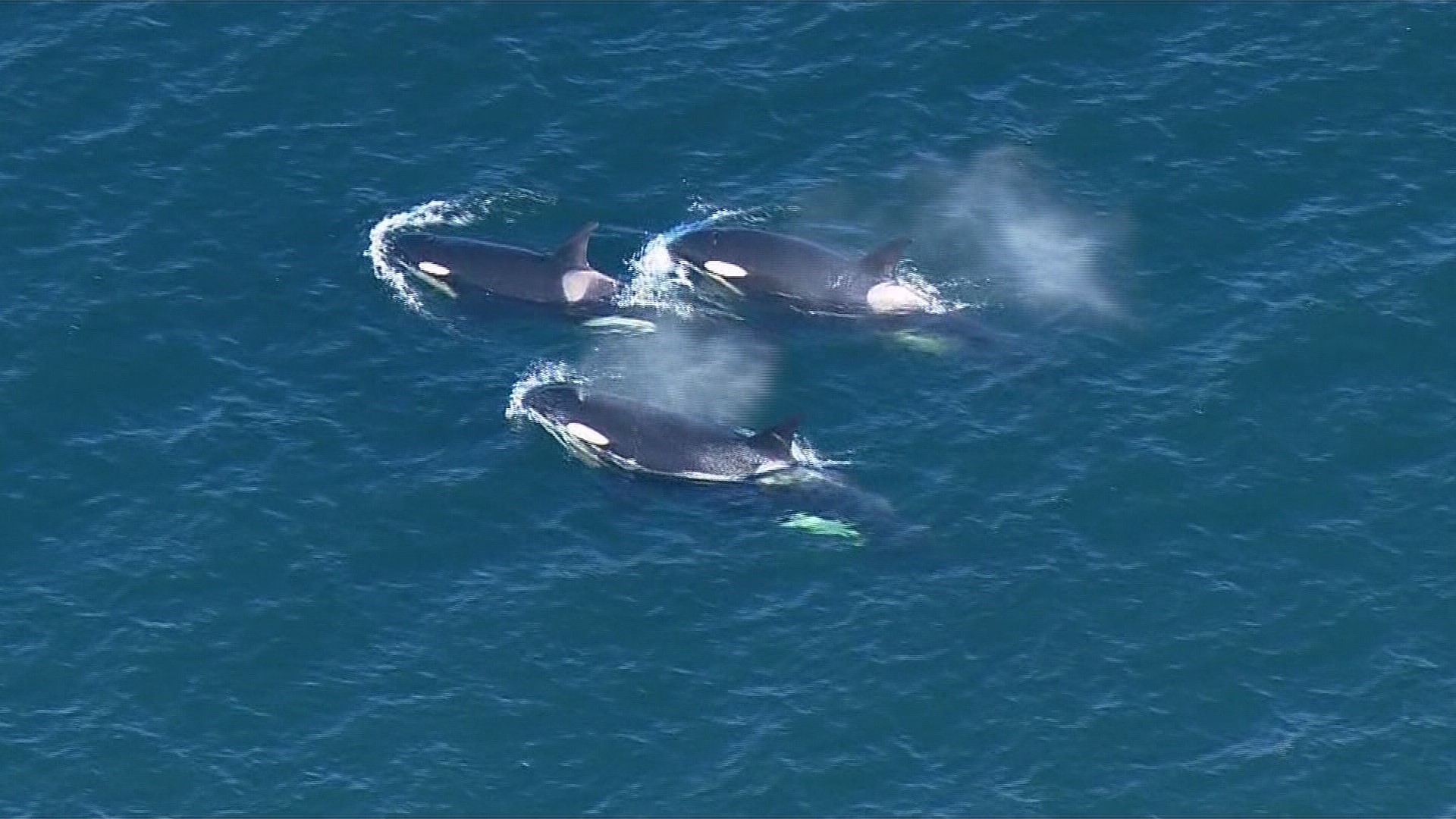Three more Southern Resident killer whales have been determined dead by the Center for Whale Research. That brings their total population down to 73.
The deceased orcas are J17, K25, and L84; that's one killer whale from each pod of the resident orcas.
J17, a 42-year-old female, was observed in declining health this year. She showed signs of improvement in April, but researchers said J17 and her daughter J53 had "deteriorated in body condition" as of May.
Drone images showed J17 with a condition called peanut head, which is a sign of malnutrition in orcas.
She was the J pod matriarch and mother of J35, who carried her dead calf for 17 days and 1,000 miles, gaining global attention. With J17 determined dead, researchers have cause to worry for her son J44, because there’s a three times greater chance a male orca will die after his mother dies.
K25, a 28-year-old male orca, was last seen in January. His declining health was first documented last fall when photos showed he appeared to have lost weight between September 2017 and September 2018.
Less is known about L84, a 29-year-old male, also determined dead. L84 was the last of a matriline of eleven whales, ten of whom died previously, according to the Center for Whale Research.
Now the L pod is down to 34 killer whales, according to the Orca Network. The J pod now has 22 members and the K pod is down to 17.
The total Southern Resident orca population stands at 73, which can be a misleading tally.
"It's basically a meaningless number, because total number of individuals means nothing," Center for Whale Research founder Ken Balcomb said. "It's the total number of reproductive animals that you have and their success at reproduction. For example, we know that 75% of the pregnancies fail, even in utero. And once the calf is born, 42% and more percent die in neonate. So that's a tragic survival record for a icon species."
J17 was near the end of her reproductive years, but it's possible she could've still given birth at age 42. The two male orcas K25 and L84 were both capable of reproducing, but neither had sired any calves.
The orca population has dwindled in recent years based on several factors like reduced food supply, contaminants in the water, and noise pollution, which affects their ability to echo-locate food.
"Last year I said, 'Now's the time to act.' Now we're past the time to act," Balcomb said Tuesday. "So do we just do nothing? Or do we just cross our fingers and act anyway, because it's going to save the salmon, save the forest. You know, it's all connected and that was your indicator, the top predator. And you're going to let them go? No. That would be ridiculous."
The National Fisheries West Coast Region responded to news of the orca deaths, "There is more to be done and we all need to do our part to help: give the whales space on the water, help reduce toxic runoff, and improve salmon habitat in your community. For more information, please visit here."



